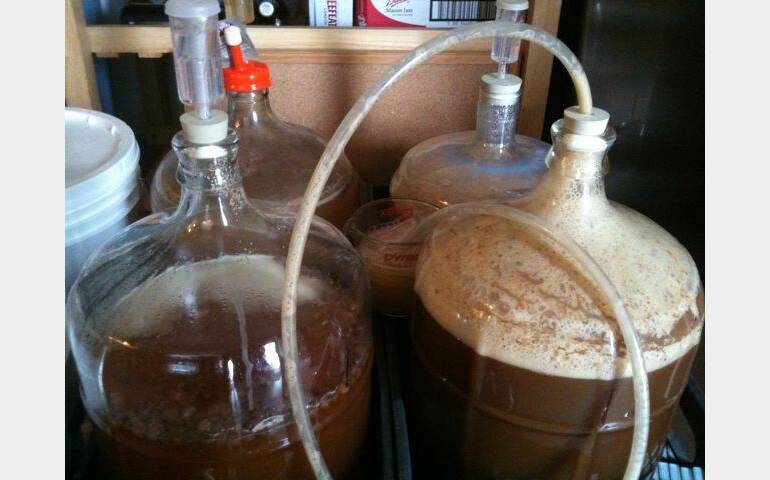Start 14-Day Trial Subscription
*No credit card required

What beginners need to know about brewing delicious beer at home
Few things feel as good as relaxing on your couch with a chilled bottle of beer in hand. The excitement goes to the next level when you watch your favorite sports teams (reviewed on liontips.com) play while enjoying a lovely homebrew beer.
But then, not everyone can brew beer at home. What ingredients are needed? What does the process feel like?
Let us educate you on what you need to know to produce that mouthwatering beer from the comfort of your home.
Basic Ingredients for brewing beer
Many ingredients go into the flavorful taste of beer. These ingredients may differ depending on the brand and flavor.
However, there are a few essentials in every bottle. The following are the basic ingredients.
Water
What causes beer to flow? Water, without a doubt!
Brewing beer necessitates a large amount of water. It is a core part of the mix, accounting for up to 85% of the entire composition.
Malt
Malts are grains that contain a lot of starch. There are several varieties of malts used in beer making, but malted barley is the most prevalent.
They are soaked in water and fermented before being used to make sugar for the brew.
Yeast
Yeast is another crucial component in the making of beer. In the absence of oxygen, this yeast acts on the sugar, breaking it down and turning it into carbon dioxide and alcohol.
Hops
Hops are what give beers that peculiar beer taste. These hops are specific flowers containing a yellow substance known as Lupulin.
The Lupulin extracts and oils are also essential in the brewing process, giving it its unique flavor.
In addition to lupulin, there is Alpha acid, also found in hops. When boiled, alpha acid gives beer its bitter taste.
The longer the boiling time, the more bitter the beer will be.
Brewing equipment you need in your home
Regular household equipment is not ideal for beer brewing. You will need to procure dedicated equipment for your homebrew.
Here are the compulsory ones you need.
- Malt Mill
The malt mill is the equipment used in grinding the malt grains into fine powder. This gets it ready for sugar extraction.
- Mash Tun
The mash tun is a container for blending the ground grain with the water, giving it a new form known as wort. This is also heated to start the sugar conversion process with the starch.
Most mash tuns have a filter compartment that separates the husk from the final output.
- Fermenter
This is also known as the carboy in the brewing industry. The fermenter is where the yeast interacts with the wort, converting it to beer.
The fermenter should be completely airtight to ensure that no airborne contaminants interfere with the operation.
Other equipments worthy of mention are the lautering tun for filtering, stirrer for stirring the mix, hydrometer for measuring the amount of sugar present in the worth, and the Brite tank, a temperature-controlled storage unit.
The Home Beer Brewing Process
- Malting
Malting is the first step in beer brewing. This process releases malted sugar for the brew.
Here, fresh malt, preferably barley, is soaked in water. The type of malt used is a determinant factor in the beer’s color.
This soaked barley is then placed in a germination box to germinate. This phase generates certain enzymes needed to propagate starch release.
- Kilning
Kilning is the drying process of the soaked barley. Normally, this drying process happens at 80°C and interrupts the germination at just the right time.
Completion of this process releases the necessary malted sugar.
- Milling
The milling process is simply the cracking of the dried grains. This process isolates the husk, further exposing the needed starch.
Typically, milling happens before or after the malting process, depending on the brewer.
- Mashing
The Mash Tun is the location for the mashing. Here, the milled malt is mixed with water and then heated to temperatures of 100°F up to 100°F.
The starch dissolves, releasing tannins, proteins, and sugar at different temperatures.
- Lautering
In the lautering process, the mash is filtered, and then the wort separates from the remaining husk.
This wort is used for brewing while the husk is collected and used in animal feed.
- Boiling and Hop Addition
The wort is then transferred to a brewing kettle or pan and boiled after lautering. Hop is added while the pot is boiling.
Different varieties of hops increase the bitterness and aroma
After this process, the wort is cooled to a temperature of 10°c and 20°c and then transferred to a fermentation tank.
- Fermentation
In the fermentation tank, yeast is added to the mixture to ferment. This yeast acts on it, turning it into beer.
- Storage
After the production processes, the final product is collected and stored. To store it, brewers use a Brite tank and other storage containers.
Conclusion
Before attaining that final unique flavor, beer passes through various processes. This process is done in a brewing factory though it can also be homemade. Either way, it uses special brewing equipment.
This article exposes the knowledge you need on how to brew beer, simplifying the process for you.



